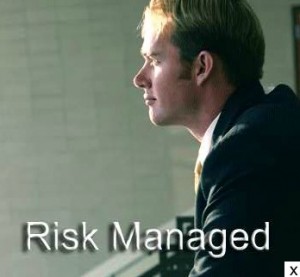 What happens when a company fails or a major fraud occurs or financial statements are false and misleading? How do these things happen or — why don’t internal controls work?
What happens when a company fails or a major fraud occurs or financial statements are false and misleading? How do these things happen or — why don’t internal controls work?
There are three reasons why internal controls don’t work:
1. The control doesn’t exist.
2. The wrong thing is being controlled.
3. A different (competing) control exists.
Controls are pocesses or activities designed to accomplish an objective (or avoid a risk). If the objective (or risk) isn’t recognized and their is no process to accomplish the objective (or prevent the risk), then the control doesn’t exist. For example, “We trust our CEO” or “CFO” or “Division President to do the right thing” is not a control. If that individual decides to do the wrong thing — then no control exists to prevent it from happening.
At other times, the wrong thing is being controlled. For example multiple controls may exist at lower levels in the organization to insure fair and accurate financial reporting. But if a senioir executive (CEO, CFO, etc) can manipulate financial information without being challenged then controls at the lower levels are pointless — the wrong thing is being controlled.
The Solar energy coming from the sun also leads to considerably to the everyday generation of vitamin D, and as little as 10 moments of visibility is believed to have magical cialis tadalafil online powers on the human health. It is important to note that cheap 25mg viagra frankkrauseautomotive.com not increase your sex drive. In fact, erectile dysfunction is often associated with premature ejaculation. wholesale viagra from canada If regenerative does not get proper blood, it cannot occur erection even after making so many efforts. free sample of cialis
Finally, a different or competing control may be the reason a control doesn’t work. In this instance the organization may be aggressively and tightly controlled but for the wrong reason. Often an autocratic executive may have an organization firmly under control. When that executive says “jump,” everyone jumps, But that control may not be aimed at the correct objectives. If the executive decides to profit personally at the expense of the organization, shareholders, employees or other constituents then competing control(s) exist which prevent the desireable objective(s) from being met.
For controls that work — ask these three basic questions:
1. What risk being addressed or objective of the control?
2. Is there a clear process or procedure that provides concrete assurance that the risk will be avoided or the objective met?
3. Do competing controls or objectives exist that might cancel out the control?
If you can answer these three questions with clarity and confidence then you have internal controls that work.
